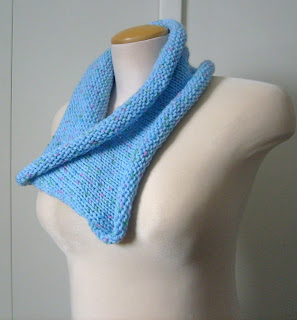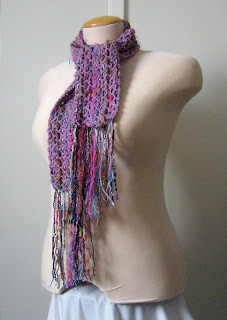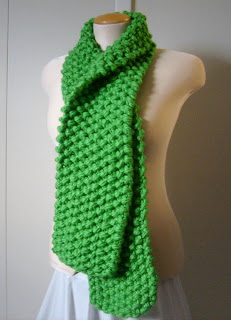 Edit: Ta-Dah!
Edit: Ta-Dah!A picture is coming when the sun gets a little higher
I decided I have far too many feminine scarves and nothing says masculine than a nice neutral colored cable scarf. I'm also a bit fanatical about scarves being pretty on both sides. I can handle it if they aren't but I'm infinitely more happy when they are 100% reversible. Happily, reversible cables are no harder than normal cables and here is one of the most basic types.
In this project I have also found one of my new favorite yarns. This is quite possibly the softest acrylic I have ever felt. I can't even describe it. It feels like baby powder when you rub it on your skin.
Loops and Threads Charisma. The brand is actually the house brand of
Michael's Craft Stores, and I couldn't be more impressed with the line so far. I hope it stays that way.
Now the basic idea of this type of cable is to work the cabling in 1x1 ribbing and not to block the ribbing out too much. This way it mimics stockinette on both sides. It's important to have a reversible edging or no edging at all to continue the reversibility. Here I've used a seed stitch.
3 balls Charisma
size 13 needles
Extra needle for cabling
Tapestry needle
Gauge is not particularly important here. Aim for about 3 sts/in
Abbrev.
Seed 5: K1, P1, K1, P1
Rib 12: *K1, P1* 6 times
CblRib: Place 6 sts on extra needle and hold in front. From left needle *K1, P1* 3 times. Working off cable needle *K1, P1* 3 times.
Cast on 22 sts.
Rows 1-6: Seed 5, Rib 12, Seed 5
Row 7: Seed 5, CblRib, Seed 5
Row 8-12: Seed 5, Rib 12, Seed 5
Repeat until your scarf is the desired length or until no yarn remains.
Cast off row: Cast off 5 in the normal way. *K2tog, bind off 1* 6 times. Bind off 5 in the normal way. This helps eliminate some of the extra width that is usually forced in with a normal bind off on a normal ribbing. It's not as elastic, but it matches the cast on row better. If you are adept at the sewn ribbing cast off, that would be a perfect substitute.
Tips on working this pattern and technique:
--Use some sort of marker to denote the right side. Because this scarf is completely reversible it can be difficult to tell which side you are on. I like to use the long tail cast on and leave the tail dangling. When the tail is on my right I know I'm on the right side.
--When counting your rows, use the seed stitch as a guide. Place removable markers on the row ends if it helps you keep track of where you are in the pattern.
--Avoid substituting yarns that don't have a lot of stretch such as cotton or bamboo. This cable can certainly be done in those yarns, but a resilient bouncy yarn will have a more even and more handsome result.
If any dear readers who are adept at this technique have tips to add, please let me know in the comments. I'll be happy to edit and give credit for your clever ideas. :)

































